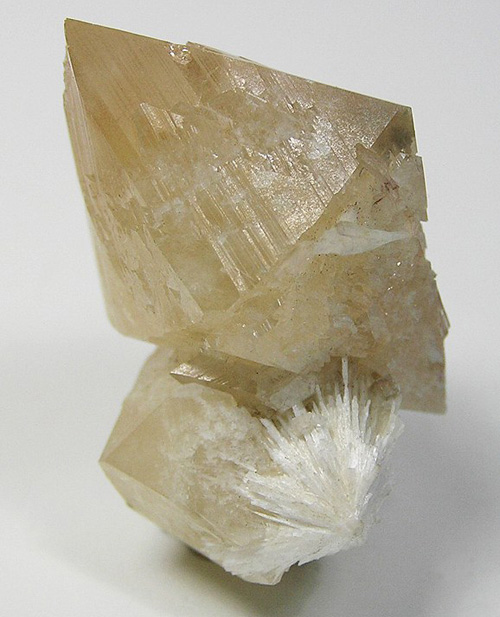The Mineral powellite

Powellite is very similar to the mineral Scheelite, though it is much rarer. It forms a series with that mineral, and contains tungsten in place of the molybdenum. Powellite often forms as an alteration product of Molybdenite, sometimes only partially replacings it. Powellite is named after geologist John Wesley Powell (1834–1902), a director for the United States Geological Survey.
Color
White, beige, light yellow, light brown, orange, light blue, green
Crystal System
Tetragonal
Uses
Powellite is as a rare and expensive collectors mineral.
Noteworthy Localities
Powellite is not a common mineral. It forms as a replacement mineral in molybdenum deposits, and its identity in these cases is frequently undetected (though it can easily be observed by its fluorescence). The largest single crystals, which are also of excellent form and highly aesthetic, come from the Indian traprock deposits of Nasik and Jalgaon, in Maharashtra state. A green, copper-rich Powellite comes from the Jardinera No. 1 Mine, in the Atacama Region of Chile. In the U.S., light green Powellite came from the Carlota Mine, Top of the World, Globe-Miami District, Gila Co., Arizona; and Molybdenite replacements from the Goodall Farm, Sanford, York County, Maine.
Distingushing Similar Minerals
Scheelite - Fluoresces bright bluish-white, whereas Powellite fluoresces yellow.